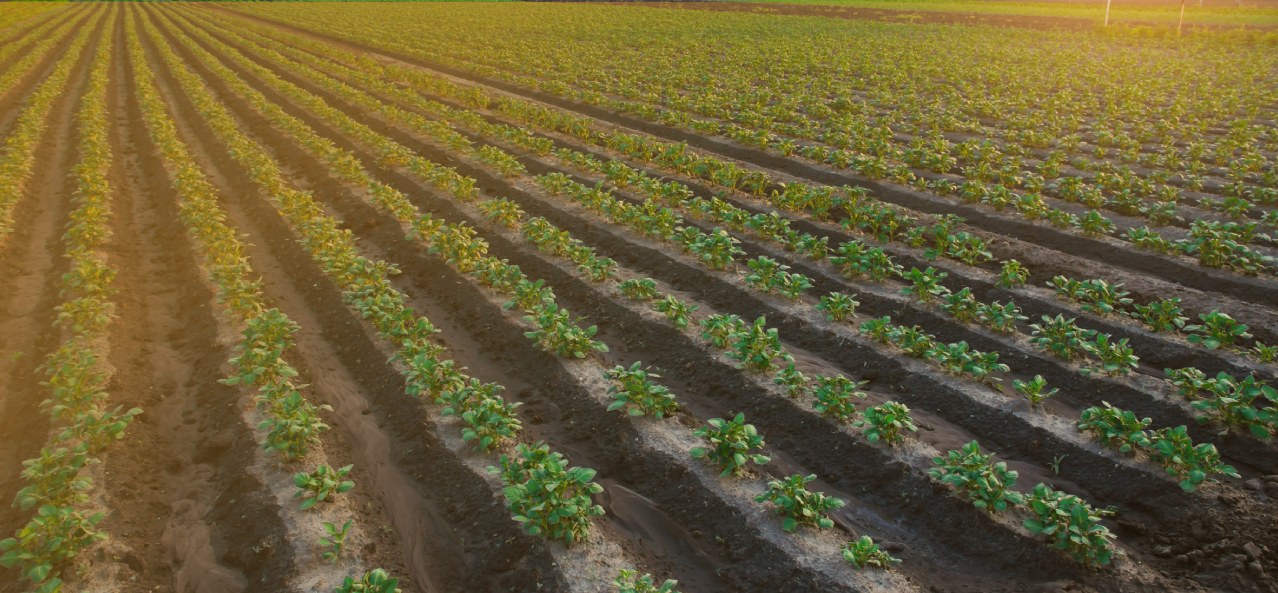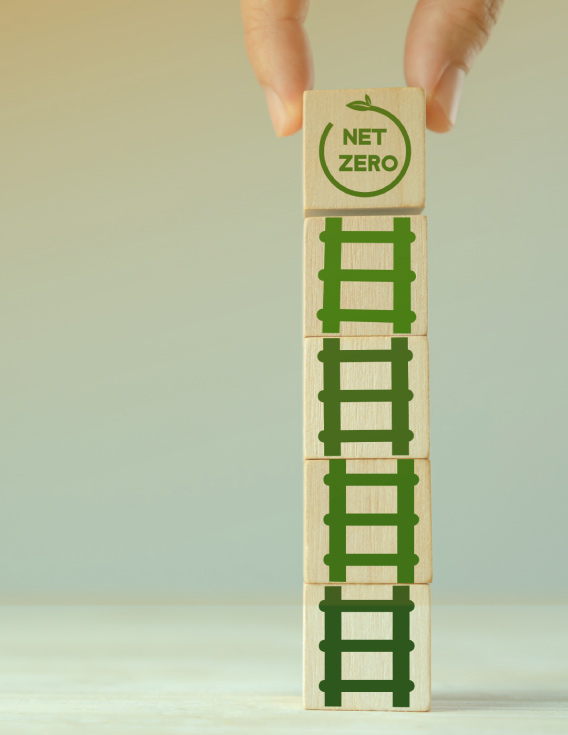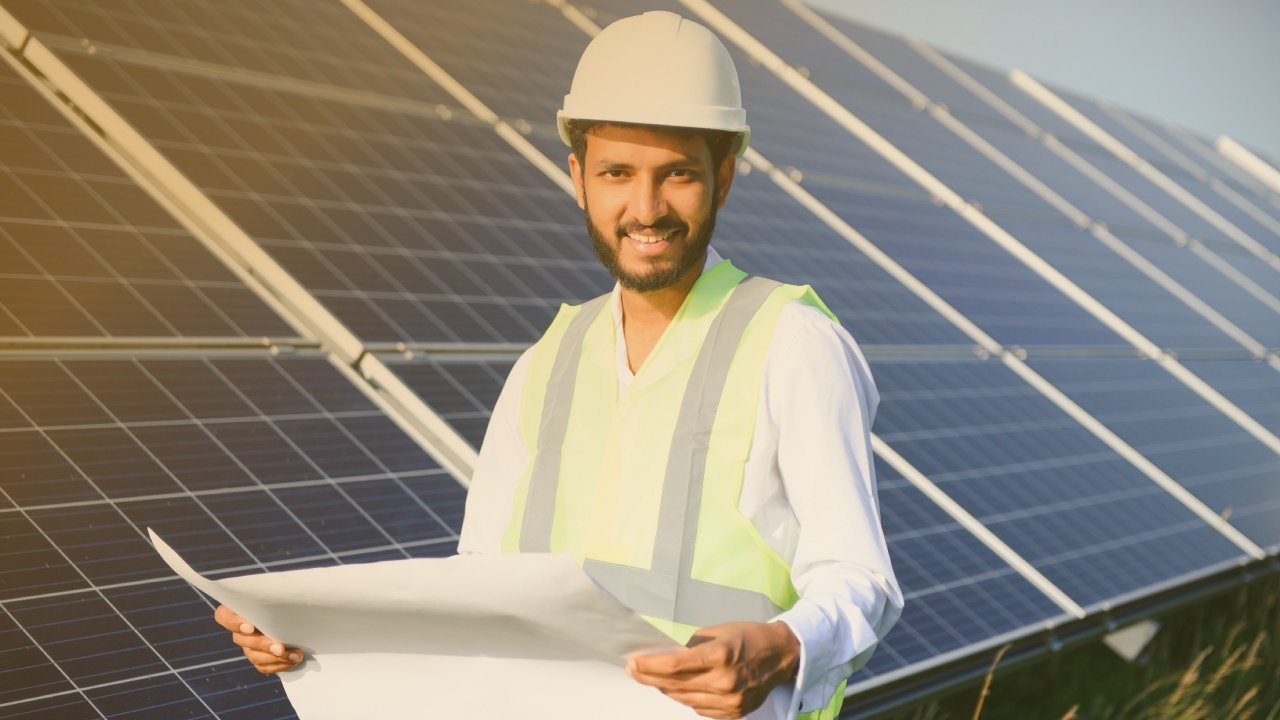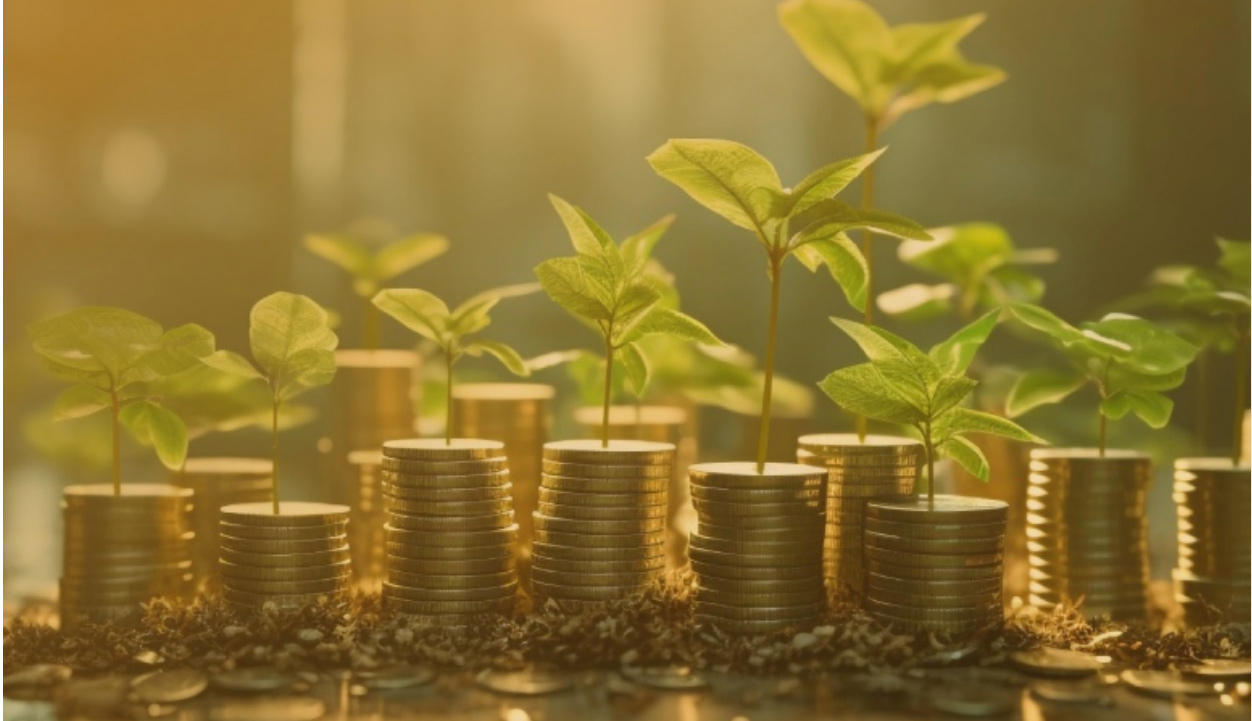SDG 12 (Responsible Consumption and Production) encapsulates sustainable development at all levels, from local to global, and in all its dimensions, linking the environment and natural resources with the social and economic components. Around the world, not a single country is fully engaged in the required fundamental shifts in consumption and production patterns. The current linear economic model of extract, make and dispose is rapidly depleting natural resources and progress in greening the economy remains negligible. While the Arab region is still developing and has not yet reached the excessive levels of resource consumption seen in industrialized nations, its economies are heavily carbon intensive and operate at the expense of natural resources.
The region’s sustainable consumption and production challenges are further aggravated by accelerating rates of resource depletion, losses in biodiversity and ecosystem health, increasing water scarcity (SDG 6), rapidly rising energy use (SDG 7) and associated greenhouse gas emissions (SDG 13). The escalating generation of waste and very low levels of reuse and recycling hinder progress on the environmental SDGs, including SDG 12. Ensuring careful management of waste is important in making cities and human settlements sustainable (SDG 11) and preserving the integrity of marine and terrestrial ecosystems (SDGs 14 and 15). SDG 12 is interlinked with economic growth and industrial development (SDGs 8 and 9) as well as sustainable agrifood systems for a world free of hunger (SDG 2). The cross-cutting character of sustainable consumption and production explains why relevant programmes are often reported under more sector-specific SDGs.
Only a few Arab countries have a strategic vision with targets to transition to sustainable consumption and production and the green economy. Some countries have nevertheless moved forward with national action plans on sustainable consumption and production and green and circular economy policies. They are making efforts to improve waste management, reduce food loss and rationalize fossil fuel subsidies. Initiatives to reduce pollution, advance sustainable tourism and organic agriculture, and institute sustainable public procurement engage the private sector, civil society organizations and the public in the more efficient use of natural resources. Many good practices and demonstration projects need to be scaled up. Policy implementation is weak and insufficiently supported with financial resources.

Sustainable consumption and production refers to using services and products that respond to basic
needs and bring a better quality of life while minimizing the use of natural resources and toxic materials
as well as emissions of waste and pollutants. This process must occur over the life cycle of services and
products to avoid jeopardizing the needs of future generations.
A green economy is defined as low-carbon, resource-efficient and socially inclusive. In a green economy,
growth in employment and income are driven by public and private investment in economic activities,
infrastructure and assets with reduced carbon emissions and pollution, and enhanced energy and resource
efficiency. Growth operates in line with the prevention of the loss of biodiversity and the provision of
ecosystem services.
The circular economy is a system where materials never become waste and nature is regenerated. In a
circular economy, products and materials are kept in circulation through processes such as maintenance,
reuse, refurbishment, remanufacture, recycling and composting. The circular economy tackles climate
change and other global challenges, including biodiversity loss, waste proliferation and pollution, by
decoupling economic activity from the consumption of finite resources.
Sources: UNEP, Sustainable Consumption and Production Policies and the Green Economy; Ellen Macarthur Foundation,
What Is a Circular Economy?.

The concept of leapfrogging is relevant for the
region. Arab countries that have not yet become
entrenched in resource-intensive development paths
can embrace efficient and advanced technologies
offering an opportunity to excel by using innovative
approaches and fewer natural resources.
A swift transition to a greener economic paradigm
should prioritize safeguarding environmental
assets and addressing the triple planetary crisis
of pollution, climate change and biodiversity loss.
Failure to act promptly may lead to irreversible
environmental damage, posing significant threats to
human health and livelihoods.
Source: UNEP, 2023e.

Although sustainable consumption and production and green economy paradigms go far beyond sectoral waste management approaches, the policy landscape related to SDG 12 in the Arab region mostly focuses on waste management and food loss and waste. There is some attention to sustainable procurement and tourism too. This restrictive approach is reflected in the policy areas covered by this chapter.
 Developed under the auspices of the League of
Arab States, the Arab Regional Strategy for Sustainable
Consumption and Production2 was endorsed by the Council
of Arab Ministers Responsible for the Environment in
November 2009.
But in 2023, it was not yet monitored,
evaluated or updated. The strategy promotes sustainable
consumption and production through the rational use of
resources to protect the environment and contribute to
poverty eradication and a sustainable lifestyle.3 Priority
areas and policy objectives include energy efficiency,
renewable energy technologies, sustainable and integrated
water resources management, waste management,
rural development, education, responsible lifestyles and
sustainable tourism. National translation of the regional
strategy is advancing at varying degrees. Several countries
have adopted sustainable consumption and production
action plans and have mainstreamed related targets and
indicators into their national development strategies. Some
countries have developed a holistic vision with targets;
others have put sectoral policies in place. Some are still
in the early planning phase in a selected sector, especially
solid waste management.
Developed under the auspices of the League of
Arab States, the Arab Regional Strategy for Sustainable
Consumption and Production2 was endorsed by the Council
of Arab Ministers Responsible for the Environment in
November 2009.
But in 2023, it was not yet monitored,
evaluated or updated. The strategy promotes sustainable
consumption and production through the rational use of
resources to protect the environment and contribute to
poverty eradication and a sustainable lifestyle.3 Priority
areas and policy objectives include energy efficiency,
renewable energy technologies, sustainable and integrated
water resources management, waste management,
rural development, education, responsible lifestyles and
sustainable tourism. National translation of the regional
strategy is advancing at varying degrees. Several countries
have adopted sustainable consumption and production
action plans and have mainstreamed related targets and
indicators into their national development strategies. Some
countries have developed a holistic vision with targets;
others have put sectoral policies in place. Some are still
in the early planning phase in a selected sector, especially
solid waste management.
 Supporting the regional policy framework,
several initiatives bring countries into dialogues
with potential to drive policy change. Regional round
tables have engaged stakeholders since 2008.4
Aligned with the Regional Action Plan on Sustainable
Consumption and Production in the Mediterranean,
5
the SwitchMed Programme
6
supports
Algeria, Egypt,
Jordan, Lebanon, Morocco,
the State of Palestine and
Tunisia in shifting to sustainable consumption and
production patterns, developing enabling national policy
frameworks, and connecting eco-entrepreneurs and
micro-, small and medium-sized Enterprises in an active
regional network. Morocco, Somalia, the Sudan and
Tunisia are involved in the African Circular
Economy Network.
7
Supporting the regional policy framework,
several initiatives bring countries into dialogues
with potential to drive policy change. Regional round
tables have engaged stakeholders since 2008.4
Aligned with the Regional Action Plan on Sustainable
Consumption and Production in the Mediterranean,
5
the SwitchMed Programme
6
supports
Algeria, Egypt,
Jordan, Lebanon, Morocco,
the State of Palestine and
Tunisia in shifting to sustainable consumption and
production patterns, developing enabling national policy
frameworks, and connecting eco-entrepreneurs and
micro-, small and medium-sized Enterprises in an active
regional network. Morocco, Somalia, the Sudan and
Tunisia are involved in the African Circular
Economy Network.
7

 Sectoral regional strategies include, inter alia,
the Pan-Arab Sustainable Energy Strategy, which
expanded the Pan-Arab Renewable Energy Strategy
2010–2030.
Adopted by the Arab Ministerial
Council of Electricity under the auspices of the
League of Arab States, these strategies cover renewable
energy, energy efficiency, energy access and carbon
dioxide emissions, and include specific targets and
indicators. They promote sustainable energy and
enhanced regional coordination and investment (see
the chapter on SDG 7). The regional strategies touch on
institutional and financial frameworks,
grid infrastructure and a skilled workforce for
accelerating the transition to renewable energy. They
also call for increased private sector engagement in
electricity markets.
Sectoral regional strategies include, inter alia,
the Pan-Arab Sustainable Energy Strategy, which
expanded the Pan-Arab Renewable Energy Strategy
2010–2030.
Adopted by the Arab Ministerial
Council of Electricity under the auspices of the
League of Arab States, these strategies cover renewable
energy, energy efficiency, energy access and carbon
dioxide emissions, and include specific targets and
indicators. They promote sustainable energy and
enhanced regional coordination and investment (see
the chapter on SDG 7). The regional strategies touch on
institutional and financial frameworks,
grid infrastructure and a skilled workforce for
accelerating the transition to renewable energy. They
also call for increased private sector engagement in
electricity markets.
The region has some of the greatest potential for solar power generation worldwide, in addition to high potential for wind energy and waste-to-energy. Renewable energy potential needs to be activated to decouple growth in living standards from fossil fuel consumption and greenhouse gas emissions. This can also accelerate economic diversification and the transition to a low-carbon economy, while creating new and decent jobs.
 Most Arab countries are parties to international
agreements on protecting human health and the
environment from hazardous wastes and other
chemicals.
The Comoros and Egypt are not parties to
the Rotterdam Convention,
8
however, and Egypt, Libya, Morocco, Somalia, the Sudan, Tunisia and Yemen are not
parties to the Minamata Convention on Mercury. Although
national legislative structures reflect the commitments of
international agreements, in 2020, only 63.6 per cent, 61.6
per cent, 39.2 per cent and 48.1 per cent of Arab parties
to the Basel,9 Rotterdam, Stockholm10 and Minamata
conventions, respectively, met obligations in transmitting
required information. All Arab countries are parties to and
compliant with the Montreal Protocol.11
Most Arab countries are parties to international
agreements on protecting human health and the
environment from hazardous wastes and other
chemicals.
The Comoros and Egypt are not parties to
the Rotterdam Convention,
8
however, and Egypt, Libya, Morocco, Somalia, the Sudan, Tunisia and Yemen are not
parties to the Minamata Convention on Mercury. Although
national legislative structures reflect the commitments of
international agreements, in 2020, only 63.6 per cent, 61.6
per cent, 39.2 per cent and 48.1 per cent of Arab parties
to the Basel,9 Rotterdam, Stockholm10 and Minamata
conventions, respectively, met obligations in transmitting
required information. All Arab countries are parties to and
compliant with the Montreal Protocol.11
• There are important gaps in the enforcement of
environmental agreements, such as in the poor
control of illicit transboundary movements of
hazardous wastes and their disposal, and a lack of
monitoring, financing and technical capacities.
• Updates and amendments are required to strengthen
environmental protection regulations in countries where
laws addressing international commitments were
established in some cases more than two decades ago.
• Coordination among relevant ministries (health,
industry, agriculture, environment) and with other
entities is required.
Source: UNEP, 2019.

 Industries are still struggling to adopt green
technologies. Pre-conditions, such as an enabling
environment and adequate capacity-building for
businesses, have not been met.12
Industries are still struggling to adopt green
technologies. Pre-conditions, such as an enabling
environment and adequate capacity-building for
businesses, have not been met.12
 Most countries subsidize water, discouraging efficient
use and leading to uncontrolled overextraction (see the
chapter on SDG 6). Only 20 per cent of wastewater is reused
in irrigation and industrial applications. Efficient irrigation
practices, crop selection and taxes on pesticides and
fertilizer use can encourage more efficient water use.
Most countries subsidize water, discouraging efficient
use and leading to uncontrolled overextraction (see the
chapter on SDG 6). Only 20 per cent of wastewater is reused
in irrigation and industrial applications. Efficient irrigation
practices, crop selection and taxes on pesticides and
fertilizer use can encourage more efficient water use.
 Reducing waste generation and reuse and recycling
should be at the core of any waste management policy.
Suitable technologies encompass a spectrum of solutions,
spanning sorting and recycling lines, composting methods,
mechanical-biological treatment, refuse-derived fuel and
biogas. Economic instruments such as waste generation
charges, tipping fees and pollution taxes can serve as cost-recovery
mechanisms, ensuring a return on investments in green technologies.
Reducing waste generation and reuse and recycling
should be at the core of any waste management policy.
Suitable technologies encompass a spectrum of solutions,
spanning sorting and recycling lines, composting methods,
mechanical-biological treatment, refuse-derived fuel and
biogas. Economic instruments such as waste generation
charges, tipping fees and pollution taxes can serve as cost-recovery
mechanisms, ensuring a return on investments in green technologies.
 The region’s transport sector faces challenges
such as an ageing vehicle fleet, inefficient fossil fuel
use and increasing emissions. Countries must embrace
green transport technologies, particularly in public
transport. This shift can reduce the use of private cars,
cut fuel costs, enhance mobility and alleviate road
congestion (see the chapter on SDG 11). The Mecca
monorail of Saudi Arabia exemplifies such efforts. Other
initiatives include the transition of Egypt to gas-powered
public transport and promotion of electric cars, and the
development of rapid express bus infrastructure
in Jordan.
The region’s transport sector faces challenges
such as an ageing vehicle fleet, inefficient fossil fuel
use and increasing emissions. Countries must embrace
green transport technologies, particularly in public
transport. This shift can reduce the use of private cars,
cut fuel costs, enhance mobility and alleviate road
congestion (see the chapter on SDG 11). The Mecca
monorail of Saudi Arabia exemplifies such efforts. Other
initiatives include the transition of Egypt to gas-powered
public transport and promotion of electric cars, and the
development of rapid express bus infrastructure
in Jordan.
 Paying more attention to social and environmental
responsibilities in their marketing practices, tourist
enterprises are increasingly engaging in eco-labelling
schemes. In Tunisia, the Center for Environmental
Technologies, a public agency of the Ministry of the
Environment, expanded a voluntary certification scheme
to improve the environmental performance of products
and services offered by the tourism sector. In Egypt,
ecotourism is a pillar of the 2019 national tourism
strategy, and natural areas listed under international
conventions are promoted as ecotourism sites. The
Ministry of the Environment oversees policies to
rebrand the country as an ecotourism destination. In
that context, a ministerial decree (No. 760–2019) set
new green criteria for ranking hotels, and the Green
Star eco-label was revised to encourage hotels and
resorts to commit to improving their environmental and
social performance.
Paying more attention to social and environmental
responsibilities in their marketing practices, tourist
enterprises are increasingly engaging in eco-labelling
schemes. In Tunisia, the Center for Environmental
Technologies, a public agency of the Ministry of the
Environment, expanded a voluntary certification scheme
to improve the environmental performance of products
and services offered by the tourism sector. In Egypt,
ecotourism is a pillar of the 2019 national tourism
strategy, and natural areas listed under international
conventions are promoted as ecotourism sites. The
Ministry of the Environment oversees policies to
rebrand the country as an ecotourism destination. In
that context, a ministerial decree (No. 760–2019) set
new green criteria for ranking hotels, and the Green
Star eco-label was revised to encourage hotels and
resorts to commit to improving their environmental and
social performance.
 Countries have policies related to waste
management and legislation banning single-use
plastic and/or plastic bags
(table 12.1).
Some have strategies and legislation on integrated solid waste
management. Examples include the National Strategy
for Integrated Waste Management by 2035 of Algeria,
the Waste Management Law (2020) of Egypt,13 The
National Strategy and Action Plan for Municipal Solid
Waste Management 2015–2034 and Waste Management
Framework Law (2020) of Jordan,
14 the Law on Integrated
Solid Waste Management of Lebanon, the National
Strategy for Waste Reduction and Recovery (2019) and
Waste Management and Disposal Law of Morocco,
and the Integrated Strategy on Waste Reduction and
Management of Tunisia. Waste disposal is gradually
shifting from uncontrolled dumpsites and illegal landfills
to sanitary dumps.
Countries have policies related to waste
management and legislation banning single-use
plastic and/or plastic bags
(table 12.1).
Some have strategies and legislation on integrated solid waste
management. Examples include the National Strategy
for Integrated Waste Management by 2035 of Algeria,
the Waste Management Law (2020) of Egypt,13 The
National Strategy and Action Plan for Municipal Solid
Waste Management 2015–2034 and Waste Management
Framework Law (2020) of Jordan,
14 the Law on Integrated
Solid Waste Management of Lebanon, the National
Strategy for Waste Reduction and Recovery (2019) and
Waste Management and Disposal Law of Morocco,
and the Integrated Strategy on Waste Reduction and
Management of Tunisia. Waste disposal is gradually
shifting from uncontrolled dumpsites and illegal landfills
to sanitary dumps.
• Municipal solid waste generation has reached 2.7
kilograms per person per day in some parts of the
region.
• Although 90 to 95 per cent of all municipal solid
waste goes to landfills, open dumping accounts for
more than 50 per cent of overall waste in the region.
• A very limited amount of collected and disposed
waste is separated, recycled, adequately treated
or composted. Collected household waste is often
mixed with industrial and medical waste during
handling and disposal.
• Improved solid waste landfilling would not solve the
issue of increasing waste generation.
 Several States have adopted recycling plans,
including the Gulf Cooperation Council countries, Iraq, Jordan,
Lebanon and Morocco. Most recycling and incineration
plants are in the Gulf Cooperation Council countries. The
region’s largest recycling plant is in Saudi Arabia; the
United Arab Emirates has an incineration plant.
15 Qatar
adopted a comprehensive plan for solid waste management
and recycling, resulting in a fully integrated solid waste
management facility in Mesaieed. In 2020, the centre
produced more than 30,000 tons of organic fertilizer and
generated about 269,000 megawatts per hour of electric
power and more than 33 million cubic metres of biogas.
This was in addition to processing more than 30,000 tons of
car tires and recycling about 420,000 tons of construction
waste.
16 In general, however, across the region, inadequate
governance, such as multiple levels of responsibilities, as
well as a lack of legislation remain barriers to integrated
solid waste management. Other challenges include
inadequate planning and improper waste disposal, rapid
population growth, limited collection services, inappropriate
use of technology and insufficient financing.
Several States have adopted recycling plans,
including the Gulf Cooperation Council countries, Iraq, Jordan,
Lebanon and Morocco. Most recycling and incineration
plants are in the Gulf Cooperation Council countries. The
region’s largest recycling plant is in Saudi Arabia; the
United Arab Emirates has an incineration plant.
15 Qatar
adopted a comprehensive plan for solid waste management
and recycling, resulting in a fully integrated solid waste
management facility in Mesaieed. In 2020, the centre
produced more than 30,000 tons of organic fertilizer and
generated about 269,000 megawatts per hour of electric
power and more than 33 million cubic metres of biogas.
This was in addition to processing more than 30,000 tons of
car tires and recycling about 420,000 tons of construction
waste.
16 In general, however, across the region, inadequate
governance, such as multiple levels of responsibilities, as
well as a lack of legislation remain barriers to integrated
solid waste management. Other challenges include
inadequate planning and improper waste disposal, rapid
population growth, limited collection services, inappropriate
use of technology and insufficient financing.

| Country | Comment |
|---|---|
| Algeria | No data. |
| Bahrain |
2019: Importation of non-biodegradable single-use plastic bags is prohibited. 2021: Manufacturing, importing and trading plastic water bottles and cups below 200 millilitres are prohibited but water bottles and cups below 200 millilitres that are manufactured for export are exempt from the order. 2022: Importing, manufacturing and distributing single-use plastic bags with a thickness of less than 35 microns are prohibited but bags used for medical purposes and those manufactured for export are exempt from the order. |
| Comoros | 2018: Production, importation, marketing and distribution of non-biodegradable plastic packaging and bags are prohibited. |
| Djibouti | 2016: Importation and marketing of non-biodegradable plastic bags that are not produced in Djibouti are prohibited. |
| Egypt | 2019: Red Sea Governorate prohibited the single use of plastic bags and plastic cutlery used in restaurants, coffee shops, supermarkets, groceries, butchers, fisheries and pharmacies, and during safari and boat trips. In South Sinai, the city of Dahab announced a ban on the use of plastic bags in July 2021 |
| Iraq | Iraq lacks specific legislation to address plastic pollution. |
| Jordan | 2017: Regulations limit the use of plastic bags by imposing fees on their distribution. They prohibit the use and production of black plastic bags, excluding those for waste collection, and oblige manufacturers to indicate with a symbol that bags are biodegradable and have obtained the approval of relevant national institutions. Plastic bags continue to be used widely, however. |
| Kuwait | 2019: Regulations prohibit certain single-use plastic items such as bottles, hot drink cups and food containers on Kuwaiti and foreign ships while in port in Kuwait or in Kuwaiti waters. |
| Lebanon | 2018: The Municipality of Jbeil banned single-use plastic bags. |
| Libya | No data. |
| Mauritania | 2013: Plastic bags ban. |
| Morocco |
2015: Plastic bags ban. In 2019, the law was amended to define the legal framework for inspections and seizures. There is a ban on manufacturing, importing, exporting, marketing and using plastic bags through Law 77–15. |
| Oman |
2021: Use of single-use plastic shopping bags is prohibited. 2023: Importation of single-use plastic bags is prohibited. |
| State of Palestine | The State of Palestine lacks specific legislation dedicated to addressing plastic pollution. |
| Qatar | 2022: Regulations prohibit companies, institutions and shopping centres from using single-use plastic bags unless they are biodegradable, reusable or recyclable. |
| Saudi Arabia | A three-staged phase-out of single-use plastics from 2017 to 2019. |
| Somalia | 2005: Local ban. |
| Sudan | 2017: Local ban (Khartoum State). |
| Syrian Arab Republic | The Syrian Arab Republic lacks specific legislation to address plastic pollution. |
| Tunisia | 2017: Production, possession and use of single-use bags, bags containing a high concentration of heavy metals and plastic bags of unknown origin are prohibited. This decree was implemented from 1 March 2020 for commercial spaces and pharmacies and from 1 January 2021 for producers and suppliers of plastic bags. |
| United Arab Emirates | 2022: Importation, manufacture and circulation of single-use plastic bags, irrespective of their material (including biodegradable bags), are prohibited. Specific legislation exists in each Emirate with several exemptions. |
| Yemen | 2021: Use, manufacture and importation of non-biodegradable plastic bags for commercial and household packaging are prohibited. |
 Although non-targeted subsidies for food items
indirectly encourage food loss and waste, some
countries have developed legislation, policies, national
guidelines and action plans to address food loss and
waste.
The National Food Security Strategy 2021–2030
of Jordan sets a subobjective to reduce food loss
and waste and enhance food safety. The
Génération
Green 2020–2030
of Morocco builds on achievements
in primary production under the Plan Maroc Vert by
emphasizing downstream agrifood system activities and
modern and efficient distribution chains. The National
Food and Nutrition Security Policy (2019–2030) of the
State of Palestine connects food loss and waste with
food and nutrition security through sustainable food
production systems and resilient agricultural practices.
The National Food Security Strategy 2051 of the
United
Arab Emirates
makes cutting food loss and waste
one of five strategic pillars and targets a 50 per cent
reduction by 2030.
Although non-targeted subsidies for food items
indirectly encourage food loss and waste, some
countries have developed legislation, policies, national
guidelines and action plans to address food loss and
waste.
The National Food Security Strategy 2021–2030
of Jordan sets a subobjective to reduce food loss
and waste and enhance food safety. The
Génération
Green 2020–2030
of Morocco builds on achievements
in primary production under the Plan Maroc Vert by
emphasizing downstream agrifood system activities and
modern and efficient distribution chains. The National
Food and Nutrition Security Policy (2019–2030) of the
State of Palestine connects food loss and waste with
food and nutrition security through sustainable food
production systems and resilient agricultural practices.
The National Food Security Strategy 2051 of the
United
Arab Emirates
makes cutting food loss and waste
one of five strategic pillars and targets a 50 per cent
reduction by 2030.
 In the United Arab Emirates, the Dubai Municipality’s
Food Safety Department has taken actions to reduce food
spoilage and waste through recycling and food transfers
to the national food bank.
In the United Arab Emirates, the Dubai Municipality’s
Food Safety Department has taken actions to reduce food
spoilage and waste through recycling and food transfers
to the national food bank.
 Food Bank of Bahrain collects surplus food from
hotels, restaurants, markets and various events,
redistributing it to families, expatriate workers and
individuals in need.
Food Bank of Bahrain collects surplus food from
hotels, restaurants, markets and various events,
redistributing it to families, expatriate workers and
individuals in need.
 In Lebanon, the Food Waste Law regulates donations
of leftovers and surplus to charities.
In Lebanon, the Food Waste Law regulates donations
of leftovers and surplus to charities.
 In Egypt, a new draft law on regulating food waste
and encouraging its redistribution, recycling and
donation has been referred to relevant parliamentary
committees.
In Egypt, a new draft law on regulating food waste
and encouraging its redistribution, recycling and
donation has been referred to relevant parliamentary
committees.
 In Tunisia, the Institut National de la Consommation
has led awareness campaigns about food loss and
waste, producing educational materials and a teaching
guide for secondary students.
In Tunisia, the Institut National de la Consommation
has led awareness campaigns about food loss and
waste, producing educational materials and a teaching
guide for secondary students.
 In Saudi Arabia, the National Transformation
Programme signed an agreement with the Saudi
Grains Organization and the Savola World
Foundation to minimize food waste.
22 The Saudi
Grains Organization has provided training to
businesses on best practices to reduce food waste.
In cooperation with a food donation society and a
recycling company, Eastern Province launched an
initiative to use food waste for conversion into
organic fertilizers.
In Saudi Arabia, the National Transformation
Programme signed an agreement with the Saudi
Grains Organization and the Savola World
Foundation to minimize food waste.
22 The Saudi
Grains Organization has provided training to
businesses on best practices to reduce food waste.
In cooperation with a food donation society and a
recycling company, Eastern Province launched an
initiative to use food waste for conversion into
organic fertilizers.
 In the United Arab Emirates, the I’M PERFECT
campaign encourages the use of imperfectly
shaped fruits and vegetables to reduce food waste
and support local food production. The Food Waste
Pledge mobilizes commercial kitchens in the hospitality
sector to cut food waste. Ne’ma, the National Food Loss
and Waste Initiative,
23 brokers collaboration among
governmental entities, the private sector, NGOs and
communities to combat food loss and waste throughout
the entire value chain. It involves farms, producers,
distributors, retailers, restaurants and households,
and fosters new national social norms that promote
responsible consumption and contribute to reducing
food loss and waste.
In the United Arab Emirates, the I’M PERFECT
campaign encourages the use of imperfectly
shaped fruits and vegetables to reduce food waste
and support local food production. The Food Waste
Pledge mobilizes commercial kitchens in the hospitality
sector to cut food waste. Ne’ma, the National Food Loss
and Waste Initiative,
23 brokers collaboration among
governmental entities, the private sector, NGOs and
communities to combat food loss and waste throughout
the entire value chain. It involves farms, producers,
distributors, retailers, restaurants and households,
and fosters new national social norms that promote
responsible consumption and contribute to reducing
food loss and waste.

 No country has specific e-waste legislation.
No country has specific e-waste legislation. Green and circular economy policies are proceeding
through legislative changes and national programmes.
For instance, Qatar published a Circular Economy Policy Paper25
paving the way to a national strategy. The circular economy
and waste management is one of four pillars of the national
environment and climate change strategy of Qatar. Saudi Arabia launched its Circular Carbon Economy National
Programme to reduce greenhouse gas emissions through
energy efficiency, storage and capture of carbon dioxide,
and other energy-focused measures. The United Arab Emirates established a Circular Economy Council to oversee
the Circular Economy Policy 2021–2031, which includes
coordinating national and local actions, developing sectoral
plans and projects, and encouraging the participation of
the private sector and cooperation between public and
private entities. The policy focuses on the manufacturing,
infrastructure, transport and food sectors. The United Arab
Emirates is exemplary in updating its legislation in line with
international commitments on the environment at both the
federal level and within each Emirate.
Green and circular economy policies are proceeding
through legislative changes and national programmes.
For instance, Qatar published a Circular Economy Policy Paper25
paving the way to a national strategy. The circular economy
and waste management is one of four pillars of the national
environment and climate change strategy of Qatar. Saudi Arabia launched its Circular Carbon Economy National
Programme to reduce greenhouse gas emissions through
energy efficiency, storage and capture of carbon dioxide,
and other energy-focused measures. The United Arab Emirates established a Circular Economy Council to oversee
the Circular Economy Policy 2021–2031, which includes
coordinating national and local actions, developing sectoral
plans and projects, and encouraging the participation of
the private sector and cooperation between public and
private entities. The policy focuses on the manufacturing,
infrastructure, transport and food sectors. The United Arab
Emirates is exemplary in updating its legislation in line with
international commitments on the environment at both the
federal level and within each Emirate.

 Gulf Cooperation Council countries are improving
waste management practices26 and increasing recycling rates.
The National Centre for Waste Management of
Saudi Arabia has set a target to divert 82 per cent of its
waste from landfills by 2030, mainly through recycling,
composting, energy production and incineration. In addition
to a new waste management law, a governance framework
has been established, linking national institutions and
private companies through public-private partnerships.27
Bahrain reviewed its National Waste Management Strategy,
emphasizing reduction and recycling initiatives. It has
issued legislation to regulate plastic waste, a ministerial
order on the management of hazardous medical waste, and
special legislation on managing e-waste in a sound, safe
and sustainable manner.
Gulf Cooperation Council countries are improving
waste management practices26 and increasing recycling rates.
The National Centre for Waste Management of
Saudi Arabia has set a target to divert 82 per cent of its
waste from landfills by 2030, mainly through recycling,
composting, energy production and incineration. In addition
to a new waste management law, a governance framework
has been established, linking national institutions and
private companies through public-private partnerships.27
Bahrain reviewed its National Waste Management Strategy,
emphasizing reduction and recycling initiatives. It has
issued legislation to regulate plastic waste, a ministerial
order on the management of hazardous medical waste, and
special legislation on managing e-waste in a sound, safe
and sustainable manner.
 Algeria, Egypt, Jordan, Lebanon, Morocco, and
Tunisia
have adopted sustainable consumption and production
national action plans.
The European Union-funded
SwitchMed programme has supported them , as well as the State of Palestine, in developing these national frameworks
and promoting good practices by the private sector, mainly
micro, small and medium-sized enterprises and ecoentrepreneurs.
The programme has backed the sharing of
experiences towards creating a community of practice on
sustainable consumption and production.
Algeria, Egypt, Jordan, Lebanon, Morocco, and
Tunisia
have adopted sustainable consumption and production
national action plans.
The European Union-funded
SwitchMed programme has supported them , as well as the State of Palestine, in developing these national frameworks
and promoting good practices by the private sector, mainly
micro, small and medium-sized enterprises and ecoentrepreneurs.
The programme has backed the sharing of
experiences towards creating a community of practice on
sustainable consumption and production.
 The national action plan of Algeria on sustainable
consumption and production is one of seven cross-cutting
strategic axes of the National Strategy on the Environment
and Sustainable Development.
The plan focuses on
concrete, innovative actions based on technological
advances and better scientific knowledge, emphasizing the
energy transition through the promotion of energy efficiency
and a zero-waste economy by 2030.
The national action plan of Algeria on sustainable
consumption and production is one of seven cross-cutting
strategic axes of the National Strategy on the Environment
and Sustainable Development.
The plan focuses on
concrete, innovative actions based on technological
advances and better scientific knowledge, emphasizing the
energy transition through the promotion of energy efficiency
and a zero-waste economy by 2030.
 In Egypt, the national action plan on sustainable
consumption and production is aligned with the
national strategy for sustainable development,
Vision 2030.
The plan promotes the efficient allocation
and use of water and energy as well as sustainable
agriculture and waste management, with a focus on
waste reduction, recovery, reuse and recycling.28 The
plan stresses the regulatory framework and behavioural
changes, emphasizing awareness-raising, capacitybuilding,
multistakeholder collaboration and partnerships,
and includes provisions for monitoring and evaluation.
Implementation is ongoing through flagship projects,
for instance, on reducing plastic bag consumption and
mainstreaming sustainable public procurement.
In Egypt, the national action plan on sustainable
consumption and production is aligned with the
national strategy for sustainable development,
Vision 2030.
The plan promotes the efficient allocation
and use of water and energy as well as sustainable
agriculture and waste management, with a focus on
waste reduction, recovery, reuse and recycling.28 The
plan stresses the regulatory framework and behavioural
changes, emphasizing awareness-raising, capacitybuilding,
multistakeholder collaboration and partnerships,
and includes provisions for monitoring and evaluation.
Implementation is ongoing through flagship projects,
for instance, on reducing plastic bag consumption and
mainstreaming sustainable public procurement.
 Jordan developed the National Strategy and
Action Plan 2016–2025 on sustainable consumption
and production for the food production, transport and
waste management sectors.
The Green Growth National
Action Plan 2021–2025 mainstreams climate and green
investments into six key sectors (agriculture, energy,
tourism, transport, water and waste) and defines 86 priority
policy actions and projects.
Jordan developed the National Strategy and
Action Plan 2016–2025 on sustainable consumption
and production for the food production, transport and
waste management sectors.
The Green Growth National
Action Plan 2021–2025 mainstreams climate and green
investments into six key sectors (agriculture, energy,
tourism, transport, water and waste) and defines 86 priority
policy actions and projects.
 In Lebanon, based on a multistakeholder
consultation and a policy scoping study, the national
action plan on sustainable consumption and production
identified three operational objectives:
first, adopt
the best available techniques to promote sustainable
consumption and production in the industrial sector;
second, introduce sustainable consumption and
production approaches related to the industrial sector in
policy and institutional frameworks; and third, conduct
education and awareness-raising among consumers. The
plan builds on a national strategy, Lebanon Industry 2025:
The Integrated Vision of the Industrial Sector in Lebanon,
29
which promotes green industries and commits to
promoting environmental management and sustainable
consumption and production principles.
In Lebanon, based on a multistakeholder
consultation and a policy scoping study, the national
action plan on sustainable consumption and production
identified three operational objectives:
first, adopt
the best available techniques to promote sustainable
consumption and production in the industrial sector;
second, introduce sustainable consumption and
production approaches related to the industrial sector in
policy and institutional frameworks; and third, conduct
education and awareness-raising among consumers. The
plan builds on a national strategy, Lebanon Industry 2025:
The Integrated Vision of the Industrial Sector in Lebanon,
29
which promotes green industries and commits to
promoting environmental management and sustainable
consumption and production principles.
 Morocco developed a national framework to promote
sustainable consumption and production, a 10-year action
plan for eco-construction and sustainable buildings, and
a 10-year action plan for agriculture and agrifood.
30 The
last is complemented by Law No. 39–12 on the organic
production of agricultural and aquatic products. It governs
the creation of labels and the accreditation of certification and control bodies. Further, the Generation Green 2020-2030
agricultural strategy aims to extend organic production to
100,000 hectares of cultivated land by 2030.
Morocco developed a national framework to promote
sustainable consumption and production, a 10-year action
plan for eco-construction and sustainable buildings, and
a 10-year action plan for agriculture and agrifood.
30 The
last is complemented by Law No. 39–12 on the organic
production of agricultural and aquatic products. It governs
the creation of labels and the accreditation of certification and control bodies. Further, the Generation Green 2020-2030
agricultural strategy aims to extend organic production to
100,000 hectares of cultivated land by 2030.
 Tunisia developed two 2016–2025 national action
plans on sustainable consumption and production for the
tourism and agrifood sectors.
The latter complements
the National Strategy for Organic Agriculture. The National
Strategy for Sustainable Development has identified
sustainable consumption and production and the
sustainable management of natural resources as major
challenges. The National Strategy on the Green Economy
addresses sustainable agriculture, integrated waste
management, promotion of sustainable tourism, energy
efficiency and renewable energies.
Tunisia developed two 2016–2025 national action
plans on sustainable consumption and production for the
tourism and agrifood sectors.
The latter complements
the National Strategy for Organic Agriculture. The National
Strategy for Sustainable Development has identified
sustainable consumption and production and the
sustainable management of natural resources as major
challenges. The National Strategy on the Green Economy
addresses sustainable agriculture, integrated waste
management, promotion of sustainable tourism, energy
efficiency and renewable energies.

 Sustainable public procurement has progressed in several middle-income countries,
31 including through
partnerships with international counterparts to establish
and adhere to standardized norms and guidelines. This
has potential to stimulate market development through
innovative processes (reuse and recycling, use of renewable
resources, energy-saving measures, improved energy
efficiency), the production of goods and services that meet
environmental considerations, and new business models.
Sustainable public procurement has progressed in several middle-income countries,
31 including through
partnerships with international counterparts to establish
and adhere to standardized norms and guidelines. This
has potential to stimulate market development through
innovative processes (reuse and recycling, use of renewable
resources, energy-saving measures, improved energy
efficiency), the production of goods and services that meet
environmental considerations, and new business models.
 In Egypt, several activities to promote sustainable
public procurement include an assessment study, a
national sustainable public procurement manual, and
national sustainable public procurement round tables and
trainings.
New measures include converting to natural gas
for government vehicle procurement and the introduction of
LED lamps in government buildings.32
In Egypt, several activities to promote sustainable
public procurement include an assessment study, a
national sustainable public procurement manual, and
national sustainable public procurement round tables and
trainings.
New measures include converting to natural gas
for government vehicle procurement and the introduction of
LED lamps in government buildings.32
 In Morocco, a national Sustainable Procurement
Strategy supports the establishment of an appropriate
institutional framework (including verification mechanisms
such as eco-labels) and a strengthened legal framework.
As
part of the National Strategy on Sustainable Development, the
Exemplary Pact of the Administration (
Pacte de l’Exemplarité
de l’Administration
) has encouraged government institutions
to lead by example through commitments on key objectives, such as being a responsible employer, mainstreaming
environmental approaches in the management of public
buildings, adopting sustainable waste management
practices, and promoting sustainable public procurement and
sustainable mobility.
In Morocco, a national Sustainable Procurement
Strategy supports the establishment of an appropriate
institutional framework (including verification mechanisms
such as eco-labels) and a strengthened legal framework.
As
part of the National Strategy on Sustainable Development, the
Exemplary Pact of the Administration (
Pacte de l’Exemplarité
de l’Administration
) has encouraged government institutions
to lead by example through commitments on key objectives, such as being a responsible employer, mainstreaming
environmental approaches in the management of public
buildings, adopting sustainable waste management
practices, and promoting sustainable public procurement and
sustainable mobility.
 In Tunisia, where a Public Procurement Agency was
created, the National Sustainable Public Procurement Plan
includes technical specifications for labelling, evaluation and
implementation criteria, and product and service life cycles.
The Ministry of the Environment has prepared an annual plan
outlining activities to promote sustainable public procurement,
and provides general oversight of the programme.33
In Tunisia, where a Public Procurement Agency was
created, the National Sustainable Public Procurement Plan
includes technical specifications for labelling, evaluation and
implementation criteria, and product and service life cycles.
The Ministry of the Environment has prepared an annual plan
outlining activities to promote sustainable public procurement,
and provides general oversight of the programme.33
 Several Maghreb countries have adopted policies to improve waste management.
The National Strategy for Integrated Waste Management by 2035 of Algeria targets
the reduction of waste at source; “zero waste in nature by
2035” is one of the main expected outcomes.
In Morocco, the national waste recovery programme
focuses on plastic waste, batteries, oils, tires, paper,
construction waste and electronic equipment to prevent
and reduce waste production and maximize reuse,
recycling and environmentally friendly substitute materials.
Tunisia developed the Strategy for Integrated Management
of Domestic and Assimilated Waste 2020–2035.
Several Maghreb countries have adopted policies to improve waste management.
The National Strategy for Integrated Waste Management by 2035 of Algeria targets
the reduction of waste at source; “zero waste in nature by
2035” is one of the main expected outcomes.
In Morocco, the national waste recovery programme
focuses on plastic waste, batteries, oils, tires, paper,
construction waste and electronic equipment to prevent
and reduce waste production and maximize reuse,
recycling and environmentally friendly substitute materials.
Tunisia developed the Strategy for Integrated Management
of Domestic and Assimilated Waste 2020–2035.
 Some countries have made notable but fragmented
efforts to address significant environmental
challenges, such as land, water and air pollution, that
disproportionately affect poor communities.
Some countries have made notable but fragmented
efforts to address significant environmental
challenges, such as land, water and air pollution, that
disproportionately affect poor communities.
 In Palestine, under the national action plan on
sustainable consumption and production, the Government
has implemented pilot initiatives to promote sustainable
agriculture and ecotourism, aiming to influence the
behaviour of businesses and consumers.
In Palestine, under the national action plan on
sustainable consumption and production, the Government
has implemented pilot initiatives to promote sustainable
agriculture and ecotourism, aiming to influence the
behaviour of businesses and consumers.
| Per capita (nominal dollars) |
Billions of nominal dollars | Percentage of total GDP | |
|---|---|---|---|
| Kuwait | 4,939 | 21.08 | 18.4 |
| United Arab Emirates | 3,923 | 37.03 | 8.6 |
| Qatar | 3,762 | 10.14 | 5.9 |
| Bahrain | 2,796 | 4.12 | 11.5 |
| Saudi Arabia | 2,113 | 76.94 | 10.0 |
| Libya | 1,784 | 12.15 | 27.1 |
| Algeria | 1,110 | 49.84 | 27.8 |
| Egypt | 597 | 66.21 | 14.4 |
| Iraq | 492 | 21.87 | 11.3 |
| Lebanon | 419 | 2.30 | 7.4 |
| Tunisia | 285 | 3.52 | 7.0 |
| Mauritania | 78 | 0.37 | 4.7 |
| Sudan | 78 | 3.66 | 4.2 |
| Oman | 53 | 0.24 | 0.3 |
| Djibouti | 47 | 0.05 | 1.6 |
| Jordan | 43 | 0.49 | 1.1 |
| Morocco | 38 | 1.42 | 1.0 |
| Comoros | 14 | 0.01 | 1.0 |
| Yemen | 0.71 | 0.02 | 0.1 |
| Arab region | 741.80 | 311.5 | 10.9 |
| World | 192 | 1,529.41 | 1.7 |



1. The environmental producer responsibility approach holds producers responsible for the end-of-life consequences of the goods they produce. It enables proper collection and disposal of items after use and assures responsible manufacturing methods, encouraging waste reduction. The approach adds all estimated environmental costs associated with a product throughout its life cycle to its market price. See: https://www.sciencedirect.com/topics/earth-and-planetarysciences/extended-producer-responsibility.
2. One Planet Network, 2009.
3. ESCWA, 2017b.
4. See the SwitchMed and Arab Sustainable Consumption and Production Round Table.
5. The Regional Action Plan on Sustainable Consumption and Production in the Mediterranean is an integral part of the Mediterranean Strategy for Sustainable Development which is a strategic framework to support the translation of the 2030 Agenda and SDGs at the regional, Mediterranean level.
6. See more on the SwitchMed initiative.
7. See the African Circular Economy Network.
8. The Rotterdam Convention on the Prior Informed Consent Procedure for Certain Hazardous Chemicals and Pesticides in International Trade.
9. The Basel Convention on the Control of Transboundary Movements of Hazardous Wastes and their Disposal.
10. The Stockholm Convention on Persistent Organic Pollutants.
11. The Montreal Protocol on Substances that Deplete the Ozone Layer.
12. ESCWA, 2019.
13. The Egyptian integrated waste management law covers extended responsibility for producers, energy production from waste, plastic bag distribution and use, and the safe collection, transfer, treatment and disposal of waste.
14. Jordan’s Waste Management Framework Law covers waste recycling, treatment and safe disposal.
15. ESCWA, 2023.
16. See Qatar, Voluntary National Review 2021.
17. See Tunisia’s first nationally determined contribution (updated submission).
18. See the State of Palestine’s first nationally determined contribution (updated submission).
19. The 11 countries are as follows, with those in bold having specific actions and measures: Algeria, Egypt, Jordan, Kuwait, Mauritania, Oman, Qatar, Somalia, the Sudan, the United Arab Emirates and Yemen. See the United Nations Food Systems Coordination Hub, Member State Dialogue Convenors and Pathways. See also United Nations, 2021.
20. UNEP, 2021b.
21. United Nations, Jordan, 2023.
22. Arab News, 2022. See the Savola Group on key CSR initiatives.
23. See more on Ne’ma, the National Food Loss and Waste Initiative.
24. Iattoni and others, 2021.
25. Invest Qatar, n.d.
26. UNEP, 2019.
27. ESCWA, 2023.
28. UNEP, 2023b.
29. See Lebanon Industry 2025: The Integrated Vision for Lebanese Industrial Sector.
30. UNEP, 2023d.
31. See more on the SwitchMed initiative.
32. See more on the SwitchMed in Egypt.
33. UNEP, 2023a.
34. UN-Habitat, 2023.
35. World Bank, 2022.
36. IISD and GSI, 2018.
Abdelazim, M. N., and N. Shareef (2020). Waste Management in MENA Regions. Springer Water.
Arab News (2022). Deal signed to reduce food waste in Saudi Arabia. 30 June.
Circle Economy (2021). The Circularity Gap Report 2021.
__________ (2022). The Circularity Gap Report 2022. __________ (2023). The Circularity Gap Report 2023.
Economic and Social Commission for Western Asia (ESCWA) (2017a). Progress on Sustainable Consumption and Production in the Arab Region – Comprehensive Baseline Assessment of Regional, Sub-regional and National Progress and Challenges for Achieving Sustainable Consumption and Production and the SDGs. __________ (2017b). Subsidy reform and environmental sustainability in the Arab region. Working paper.
__________ (2019). Policy Options for Promoting Green Technologies in the Arab Region.
__________ (2023). Accelerating circularity in the Arab region. Policy brief.
Food and Agriculture Organization of the United Nations (FAO) (2015). Regional Strategic Framework: Reducing Food Losses and Waste in the Near East and North Africa Region.
__________ (2019). The State of Food and Agriculture 2019. Moving Forward on Food Loss and Waste Reduction.
__________ (2022). Voluntary Code of Conduct for Food Loss and Waste Reduction.
Hemidat, S. and others (2022). Solid waste management in the context of a circular economy in the MENA region. Sustainability 14: 480.
Iattoni, G. and others (2021). Regional E-waste Monitor for the Arab States 2021. Bonn, Germany.
International Institute for Sustainable Development (IISD) and the Global Subsidies Initiative (GSI) (2018). Getting on Target: Accelerating Energy Access Through Fossil Fuel Subsidy Reform.
Invest Qatar (n.d.). Circular Economy: Policy Paper.
One Planet Network (2009). Arab Regional Strategy for Sustainable Consumption and Production. Final draft.
Pearce, D., and D. F. von Finckenstein (n.d.). Advancing Subsidy Reform: Towards a Viable Policy Package.
United Nations (2021). More than 100 countries sign up to develop national strategies for transforming food systems. Press release, 26 April.
United Nations Environment Assembly (2022). End plastic pollution: towards an international legally binding instrument. UNEP/EA.5/RES.14.
United Nations, Jordan (2023). FAO launches a project focusing on the transformation of food systems in Jordan.
United Nations Environment Programme (UNEP) (2018). Legal Limits on Single-Use Plastics and Microplastics: A Global Review of National Laws and Regulations. Nairobi. __________ (2019). Waste Management Outlook for West Asia: Waste to Wealth. Nairobi.
__________ (2021a). The State of Food Waste in West Asia. Nairobi.
__________ (2021b). UNEP Food Waste Index Report 2021. Nairobi.
__________ (2023a). Factsheets on Sustainable Public Procurement in National Governments. Nairobi.
__________ (2023b). How Egypt Is Switching to a Circular Economy. Nairobi.
__________ (2023c). How Jordan Is Switching to a Circular Economy. Nairobi.
__________ (2023d). How Morocco Is Switching to a Circular Economy. Nairobi.
__________ (2023e). Trends and Outlook of Natural Resource Use in West Asia. Report of the International Resource Panel. Nairobi.
United Nations Human Settlements Programme (UN-Habitat) (2023). State of the Arab Cities 2022.
World Bank (2022). Morocco – Municipal Solid Waste Sector Development Policy Loans 1-4. Independent Evaluation Group, Project Performance Assessment Report 165279. Washington, D.C.: World Bank.
World Economic Forum (2023). Global Risks Report 2023.
World Resources Institute (2021). Egypt: transitioning away from subsidizing fossil fuels. 1 April.